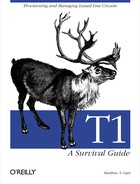Table 6-4 summarizes the most common CSU/DSU configuration options, along with available settings, common industry defaults, and additional remarks.
Table 6-4. T1 CSU/DSU configuration options
|
Option name |
Possible settings |
Who sets this option? |
Remarks | |
|---|---|---|---|---|
|
Framing |
Superframe (also SF or D4) Extended superframe (ESF) |
Equipment defaults to SF; most lines are ESF Some equipment can autoselect |
Telco | |
|
Line code |
AMI B8ZS |
Equipment defaults to AMI; lines are usually B8ZS |
Telco | |
|
Transmit clock source |
Network (also looped timed): transmit clock derived from receive clock DTE Internal CSU/DSU oscillator |
Varies |
DTE vendor; the network setting is generally safest |
There is a wide variation in terminology. Consult the manual. |
|
Internal CSU/DSU oscillator Inverted signal from oscillator Supplied by DTE (also called external) |
Internal Sometimes can be automatically selected |
DTE vendor |
Generally internal. Long cables may require inverting the internal clock signal. | |
|
Line build out |
0 dB 7.5 dB 15 dB 22.5 dB |
0 dB Some equipment can autoselect |
Telco |
Usually 0 dB when connected to a smart jack, though it could be anything. |
|
Transmit FDL performance reports |
Transmit Do not transmit |
Transmit |
Telco |
Performance reports exist only on ESF links. |
|
Transmit yellow alarm |
Transmit Do not transmit |
Transmit |
Telco/ISP | |
|
Inband signaling |
Yes No |
No |
Telco |
Steal 8 kbps from channel 1 for signaling. |
|
Channel data rate |
64k 56k |
56k |
Telco |
B8ZS must be used for 64k. Either B8ZS or AMI can be used with 56k, though AMI is more common. |
|
Number of channels; channel map |
1-24 |
Varies |
Telco |
Based on subscription level for fractional T1. |
|
Channel order |
Continuous Alternating |
Continuous |
Telco |
Alternating is used to ensure pulse density on non-B8ZS links. Half of the channels carry data, and the other half are used to maintain ones density. The bandwidth penalty is very high, so the alternating option is rarely used. |
|
Data inversion |
Do not invert Invert |
Do not invert |
Telco |
Assures ones density on some types of HDLC lines; generally not needed. |
|
Bit stuffing |
Do not stuff Stuff |
Disable |
Telco |
Required only when line does not ensure correct ones density; generally not used. |
